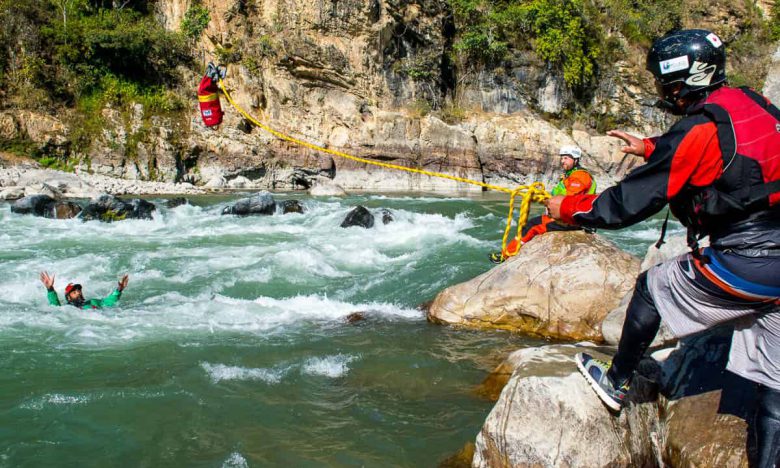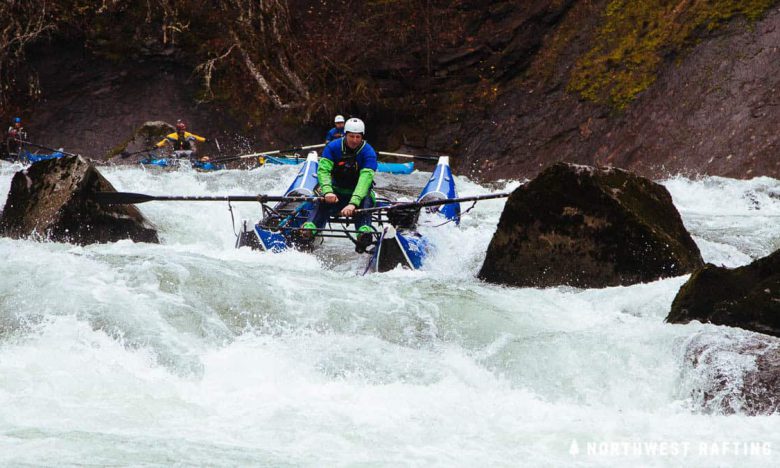Whitewater paddlers should carry rafting safety kits and obtain safety/rescue training – especially on rivers that are Class III and harder. Safety kits (also known as “wrap kits” or “pin kits”) contain equipment that can be used to unpin rafts, rescue trapped swimmers, and/or transport people and gear around dangerous rapids.
A few years ago I wrote an article about the heavy duty outfitter safety kit we bring on our multi-day commercial trips. For day trips with paddle boats or catarafts I bring a slimmed down “safety kit” based on Mark Hirst’s 4:3:2:1:1 principle.
4 Locking Carabiners
Carabiners are useful for attaching ropes, pulleys, anchors, and rafts to each other. In whitewater we should use locking carabiners and you can choose between screw gate and auto locking. The auto locking carabiners are a bit more expensive but are considered more responsible since you they lock on their own. I suggest going with simple oval or “D” carabiners since they work well with pulleys.
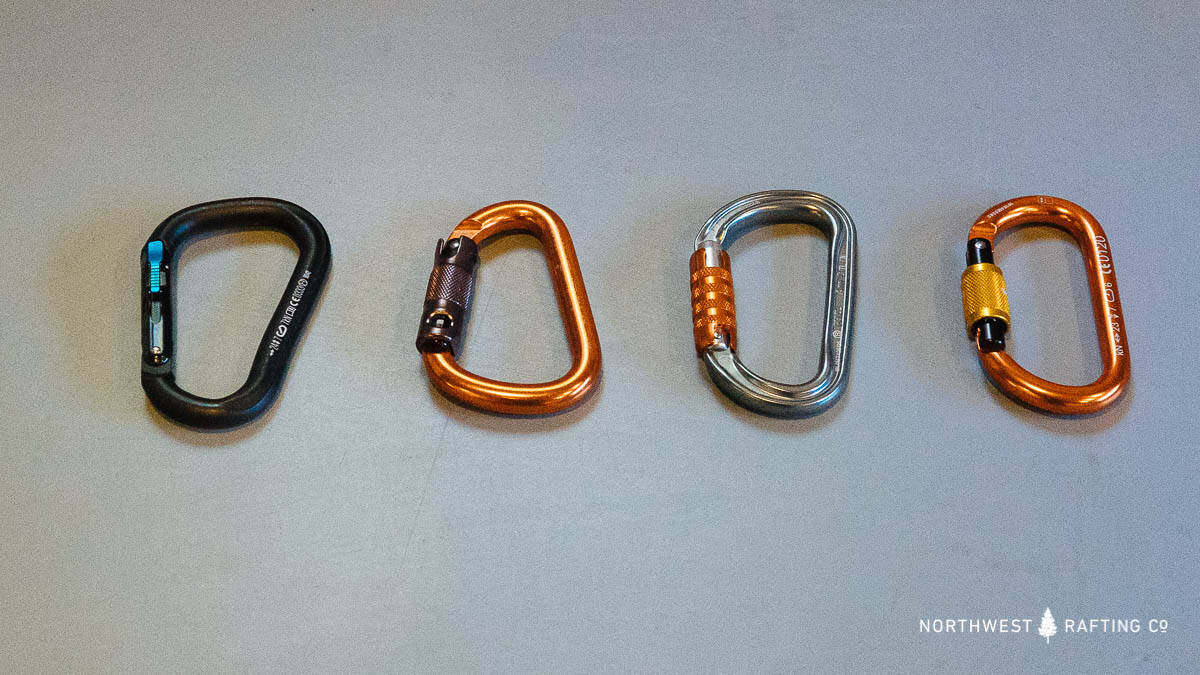
My pick is the Falcon Autolock Carabiner. If you’re on a budget then find a good screw gate carabiner like the Osprey Oval Screwlock Carabiner.
3 Pulleys
Pulleys reduce friction and change the direction of moving rope and are commonly used to create mechanical advantage. Two pulleys allow you to set up a 3:1 mechanical advantage system (a “z-rig”). If you have a third pulley then you can add a change of direction to your “z-rig” to get the people pulling on the system out of the line of fire of the equipment if the system breaks. When purchasing pulleys I like to get prussic minding pulleys and those with sealed bearings.
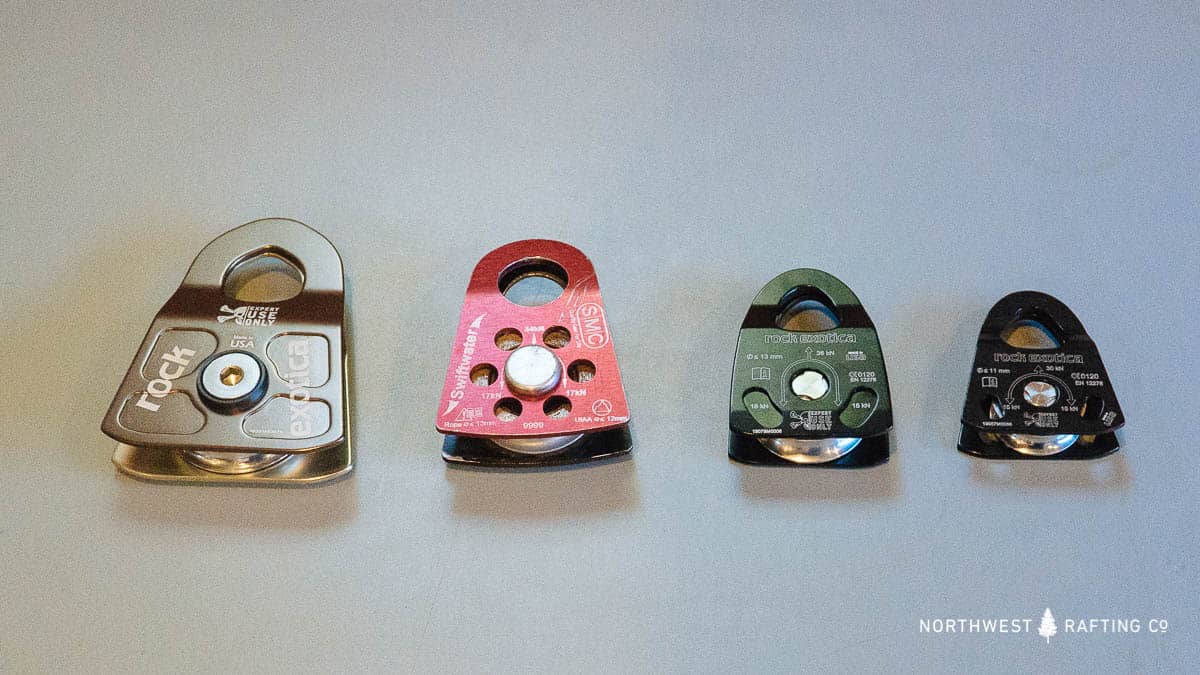
If you paddle with friends that also carry safety kits you may want to consider just bringing just one or two pulleys. I’m personally quite fond of the 2:1 mechanical advantage system that requires just one.
My pick is the Rock Exotica Machined Rescue Pulley or the Rock Exotica Mini Machined Pulley.
Note: You should receive proper training before setting up any mechanical advantage system in a whitewater environment.
2 Prussics
Prussics are an important ingredient for mechanical advantage and progress capture systems. When purchasing prussics loops for whitewater rescue, consider:
- Rope diameter smaller than the rope you’re going to attach to
- A pre-sewn loop instead of rope tied with a double fisherman’s knot
- A variety of ropes and cords will work but there are some prusik specific cords that work better
- The size of the loop depends on the diameter your main rope and the pulleys you use
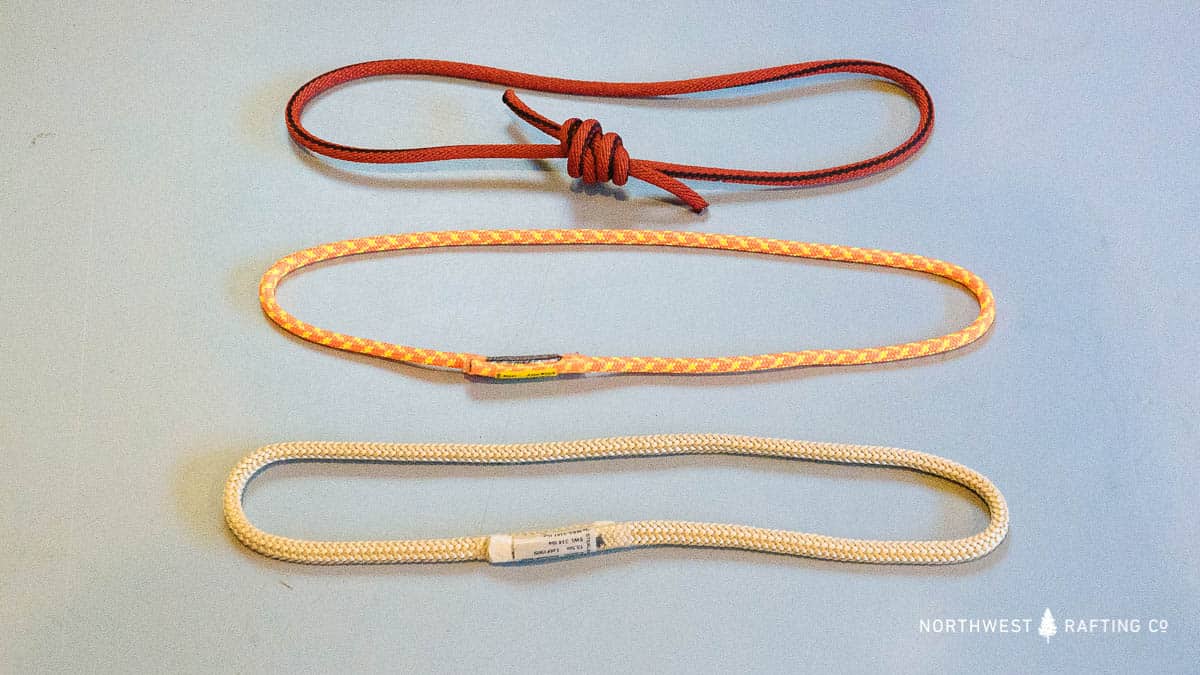
My pick is the 13.5″ Sterling 6mm Auto Block Cord.
1 Flip Line
Flip lines are 8-12 foot sections or rope or webbing that are generally used to flip upside rafts back over. They can also be use to create anchors on trees, rocks, and/or rafts. Most paddlers use 1″ tubular webbing but there are new modern slings that are smaller and just as strong.
My pick is the River Hardware Rafting Flip Line.
1 Throw Bag
Throw bags are an essential piece of safety equipment that require training and practice to use safely. There are many things to think about when choosing your throw bag:
- Choose a length and diameter of rope that allows you to throw it accurately
- I like a thick diameter rope since it’s easier to grab and pull on
- Find a bag without extra loops that violate the clean line principle
- Consider a rope with a spectra core if you’re going to use it with heavy loads
If you’re using throw bags often then consider a waist belt throw bag that you can wear while you’re on the river. My pick is one of the WWTC Waist Belt Throw Bags.
What you bring is up to you and depends on your level of training and the type of boating you do. Some people follow a 3:2:1 principle for things they carry in their PFDs which corresponds to 3 carabiners, 2 pulleys, and one prussic.
